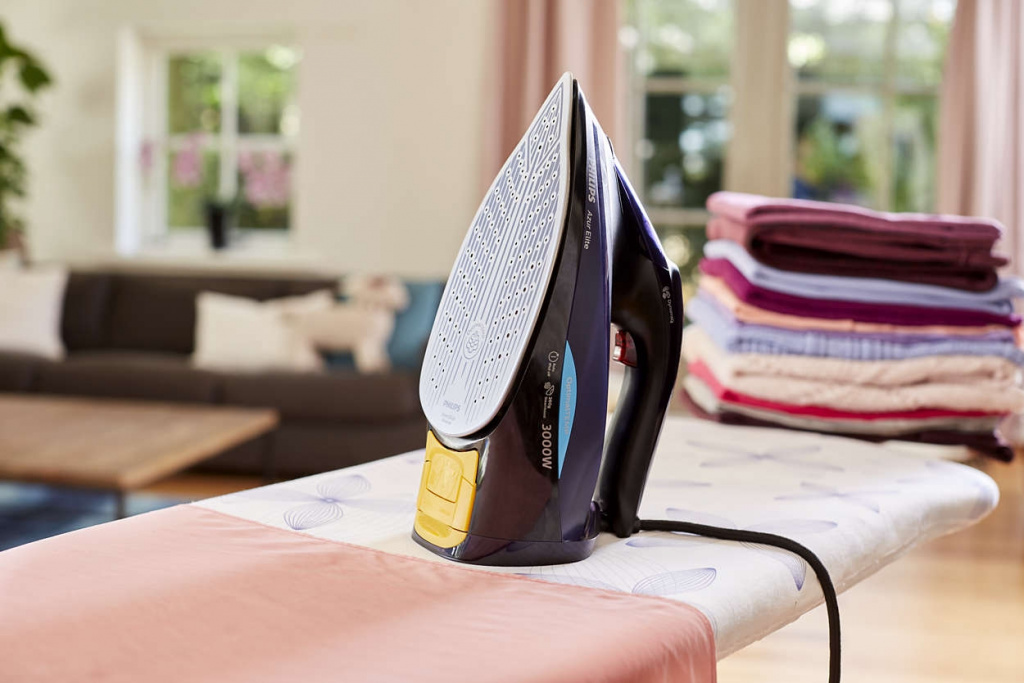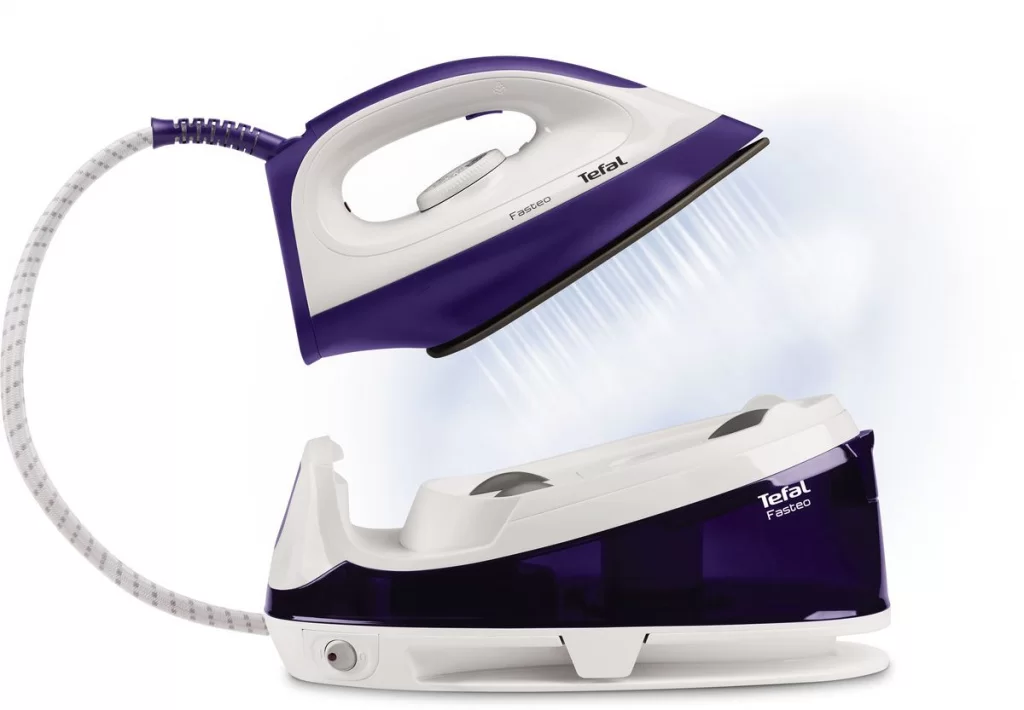
Which iron coating is better
Aesthetic design and ease of use, as practice shows, are far from the most important characteristics of a reliable and functional iron. Everything is decided by the type and design features of the sole. In its manufacture, various materials are used, each of which has both undoubted advantages and obvious disadvantages. Which coverage is best? Our experts compared
Inexpensive aluminum
The first material that was used for electric irons (before that, coal and cast iron models of appliances existed on the market). Aluminum remains the most common (and inexpensive) material for irons to this day. The aluminum coating is lightweight, perfectly smooth, quickly heated to the desired temperature (almost instantly — due to the high coefficient of thermal conductivity).
Insignificant weight provides excellent maneuverability of the household appliance — it is very convenient to use, the load on the brush during the use of the iron is minimal. But the aluminum coating also has its drawbacks. Due to its softness, the material is not resistant to deformation — it is easy to scratch it. In addition, after ironing with an aluminum-coated iron, a characteristic sheen may appear on the fabric, which is almost impossible to remove.
To solve this problem, manufacturers have come up with a special aluminum treatment method — anodizing. Such products are usually marked with Careeza, Anodilium or Eloxal technology. If one is present, this indicates the safety of the coating for things.
Pros:
-
Minor weight;
-
Fast heating;
-
Low price.
Strong steel
Another inexpensive, but much more durable than aluminum, iron coating material. Due to the resistance to mechanical stress and corrosion process, steel-coated products are among the most sought after.
By the way, some brands apply a chrome coating to the sole to enhance the anti-corrosion properties of the product being created. The most functional and expensive option among steel irons are models with a sapphire coating.
Steel irons do an excellent job with any creases without the effect of «smoothing», they heat up to the desired temperature in a matter of seconds. Unlike aluminium, stainless steel does not stick to the fabric when the specified temperature is exceeded, but leaves a “burn” on it. Most irons with a steel sole have an impressive weight, although there are also compact models that weigh only 1 kg.
Pros:
-
Strength;
-
Resistance to the corrosion process;
-
Fast heating;
-
High-quality ironing of any folds and creases in the fabric;
-
Low price.
Sensitive Teflon
Teflon is an excellent solution for an iron, but its functionality drops rapidly after the first scratch appears on the coating, so the material requires careful handling. It is worth mentioning that the sole itself in such irons is made of steel or aluminum: only the outer layer is Teflon. Teflon-coated products are very light, manoeuvrable and therefore easy to handle.
The Teflon coating is perfectly smooth — the iron soleplate glides easily over any fabric. In addition, Teflon has a delicate effect on things: in order to burn the fabric with a Teflon coating, you have to try. In addition, the coating heats up very quickly, almost instantly. And even after switching the operating mode of the iron to the minimum power consumption, the soleplate of the appliance remains hot for a long time. But such a material also has unpleasant features: it is easily scratched, if there is damage, the coating loses its non-stick properties.
Pros:
-
High functionality;
-
Minor weight;
-
Non-stick properties (does not damage the fabric);
-
Ergonomic design;
-
Low price.
Functional ceramics/metal ceramics
Ceramics, like Teflon, is quite popular for one main reason: the fabric does not stick to such a coating. The ceramic coating perfectly glides over the fabric, and the ceramic-metal one also perfectly smooths out any wrinkles, however, the weight of the latter is higher than that of ceramics. Attracts consumers and a fairly loyal price for the product.
But there were some drawbacks: the ceramic sole is very fragile — one strong blow is enough to permanently damage the coating (after that it will begin to leave “burns” on things). In addition, ceramics are prone to the formation of carbon deposits, which are so ingrained into the coating that it can only be removed with a special cleaning agent for irons.
Pros:
-
Light weight (ceramics);
-
High quality ironing;
-
Non-stick properties.
Stylish nickel
One of the common types of spraying on irons with stainless steel soles. A distinctive external feature is the effect of light gilding. Nickel irons are easy to use, easy to clean with a natural cloth and vinegar if necessary, have excellent maneuverability, and are resistant to corrosion.
As for the shortcomings, the most significant, perhaps, can be called the failure of the coating in the event of the slightest scratches on its surface. It is almost impossible to remove them, and they will reduce the quality of ironing: scratches have an unpleasant property to cling to the fabric. This problem is especially acute when it comes to ironing chiffon, silk, etc.
Pros:
-
Ease of operation and maintenance;
-
Corrosion resistance;
-
High functionality.
New to the market — titanium
The newest type of iron coating on the market — innovative technology in action. It is not possible to strictly evaluate this product at the moment, so you have to rely on information from the manufacturer itself. So, the titanium sole of the iron glides perfectly over the fabric, is incredibly resistant to mechanical damage, corrosive processes, has excellent aesthetic properties, and lasts a long time.
But still no material could be called ideal, and titanium is no exception. Titanium coating has low thermal conductivity: such irons heat up for a long time. And this, in turn, entails increased energy consumption. In addition, for high-quality cleaning of the titanium sole, special tools are required. As a rule, manufacturers recommend purchasing them together with a household appliance.
Pros:
-
Light weight;
-
High functionality;
-
High strength;
-
Corrosion resistance.
Tips for choosing an iron soleplate
The coating is certainly an important and strictly individual factor when choosing an iron, but one cannot but take into account the design features of the sole itself. Pay attention to the following points:
-
The size of the steam outlet holes — small holes will provide the iron with excellent glide over the fabric. This is a great option for ironing delicate, thin fabrics like silk. Larger holes will provide a powerful steam boost — steam can penetrate deeper into the fabric structure. This sole is suitable for ironing thick fabrics.
-
The shape of the sole — pay attention to the shape of the nose — the pointed version will perfectly cope with hard-to-reach places on things. And the rounded back of the sole will improve the glide of the device when moving backwards.
-
Self-cleaning function — found mainly in the most advanced models of irons. This is a great alternative for those who don’t like to waste time cleaning the bottom of the appliance.
Comparative characteristics
|
|
|
|
|
|
|
|
|
Strength
|
Low
|
High
|
Low
|
Low
|
Low
|
High
|
|
Heating rate
|
Fast
|
Medium
|
Fast
|
Fast
|
Fast
|
slow
|
|
The weight
|
Small
|
Average
|
Small
|
Average
|
Average
|
Average
|
|
Corrosion resistance
|
Low
|
High
|
High
|
High
|
High
|
High
|
|
Electricity consumption
|
Small
|
Average
|
Small
|
Small
|
Small
|
High
|
|
Price
|
Low
|
Low
|
Low
|
Medium
|
Low
|
High
|



Добавить комментарий
Для отправки комментария вам необходимо авторизоваться.